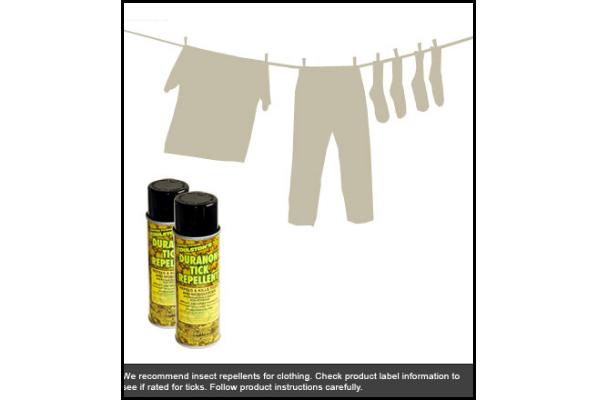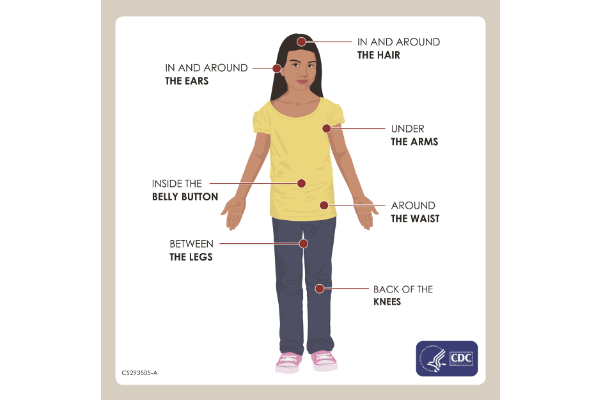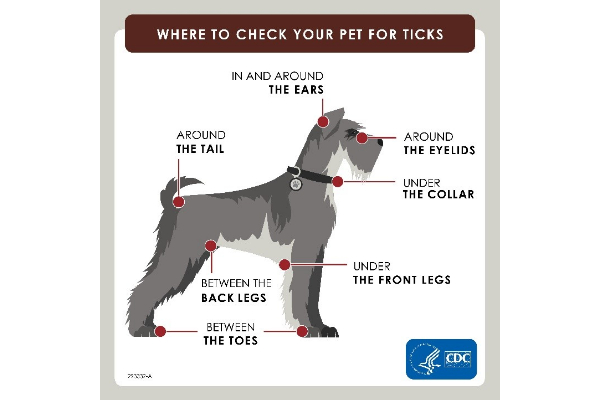Personal Protection
Tick Bite Prevention Tips
When it comes to keeping ticks off your body, you always want to be aware of your surroundings and the activities you’re partaking in at home and away.
Remember that exposure equals risk!
Ticks generally tend to be near the ground and up to 3’ on plants; they can be found in just about any location, high risk areas tend to be near areas with heavy leaf litter, brush and old firewood piles, tall grasses, the sides of hiking trails and edges of densely wooded areas, athletic fields and roadsides.
When venturing through or near these high-risk areas, exercise extreme awareness and make sure you perform a self-examination afterwards.
Get Your Free Tick Control Estimate
Schedule an onsite consultation with one of our professional tick control specialists.

Clothing
The right clothing is important and a great first line of defense. In most cases, the more you’re covered the less chance ticks will have access to your skin.
Proper shoes, socks, long pants and long sleeves are excellent starting points. Light-colored clothing is also a good idea because you’ll be able to spot ticks more easily.
Tuck pants into socks to prevent ticks from entering down low and tuck in shirt tails to keep adult stage ticks from getting in after it climbs up your body.
Reminder: Immediately look at your clothing after it brushes up against vegetation.
Tick-Repellent Clothing
It’s a thing!
Purchase tick repellent impregnated clothing that will last up to 70 washings. Expensive, but has its place: Summer campers and staff, hunting, work that brings you into tick habitats. Why treat your clothes every single day if you can just wear, wash and wear again.
Repellants
There are two options to consider for tick repellents, direct to clothing and skin.
Clothing repellents are applied to your exterior clothing and gear when you’re in high rise tick environments. One of the best performing clothing tick repellents is Permethrin. Permethrin can be used to treat boots, clothing and camping gear and remain protective through several washings.
In addition to treating your clothing with permethrin, you can also use insect repellent on your skin. For skin applications consider an EPA approved tick repellent spray. Some common skin tick repellents contain DEET, Picaridin; garlic and lemon-eucalyptus essential oils can be effective too.


Tick Check
When returning from outdoors, thoroughly check yourself and your children for ticks. Conduct a full body check while focusing on parts of the body where ticks are most likely to attach.
- Showering within a few hours of returning indoors may help remove unattached ticks and provides the opportunity to fully check the entire body.
- In front of a mirror or not, do a full body tick check.
- Can’t see the area, use your tactile sense and feel around.
- Ticks may be found anywhere on the body, particularly under the arms, behind the knees, between toes, groin area, ears, belly button, under rings and watches too.
- Look for tiny brown/black spots and remember that the size of ticks can vary depending on life stage and feeding status.
- Properly remove any ticks that are attached.
How To Remove A Tick
Even with the best precautions and planning, ticks can get through your defenses. If you find a tick that has attached to your skin, remove it as soon as possible. There are several tick removal devices on the market, but regular set of fine-tipped tweezers or forceps work best.
Correctly removing a tick in the first 24 hours dramatically reduces the risk of Lyme disease and is your best protection in preventing yourself from getting Lyme disease.
- Use clean, fine-tipped tweezers to grasp the tick as close to the skin’s surface as possible.
- Pull upward with steady, even pressure. Don’t twist or jerk the tick; this can cause the mouth-parts to break off and remain in the skin. If this happens, remove the mouth-parts with tweezers. If you cannot remove the mouth easily with tweezers, leave it alone and let the skin heal.
- After removing the tick, thoroughly clean the bite area and your hands with rubbing alcohol or soap and water.
Once removed, dispose the tick by:
- Putting it in alcohol,
- Placing it in a sealed bag/container,
- Wrapping it tightly in tape, or
- Flushing it down the toilet.
Never crush the tick with your fingers, do not burn the tick to kill it
IMPORTANT! Never use solvents, heat, nail polish or petroleum jelly to remove or suffocate a tick, it takes too long and can aggravate the tick to a point that induces the tick to regurgitate it’s gut contents into your body which may include the spirochetes that cause Lyme disease and other disease causing pathogens.


Habitat Avoidance
- If possible, avoid tick-infested areas or areas you believe may be infested with ticks.
- Avoid walking through wooded and brushy areas with tall grass and leaf litter.
- Walk in the center of cleared trails and paths to avoid brushing up against vegetation.
- Do not sit in the first 9 feet of turf adjacent to a primary tick habitat.
- Careful walking the dog, running, walking and bike riding along roadsides, vehicles aren’t your only risk.
- June and July are peak periods of Blacklegged nymph stage ticks.
- Oct, Nov & March are peak periods for the Blacklegged adult stage.
Pet Check
Dogs are prone to tick bites and tickborne diseases. Signs of tickborne disease may not appear for 1-3 weeks or longer following a tick bite, so watch your dog closely for changes in behavior or appetite if you suspect that your pet has been bitten. The longer a tick feeds on your dog the more likely Rover may become infected. Check your pets daily, especially after they spend time outdoors.
Speak to your veterinarian about the best tick preventative product for your family friend and use it monthly.





